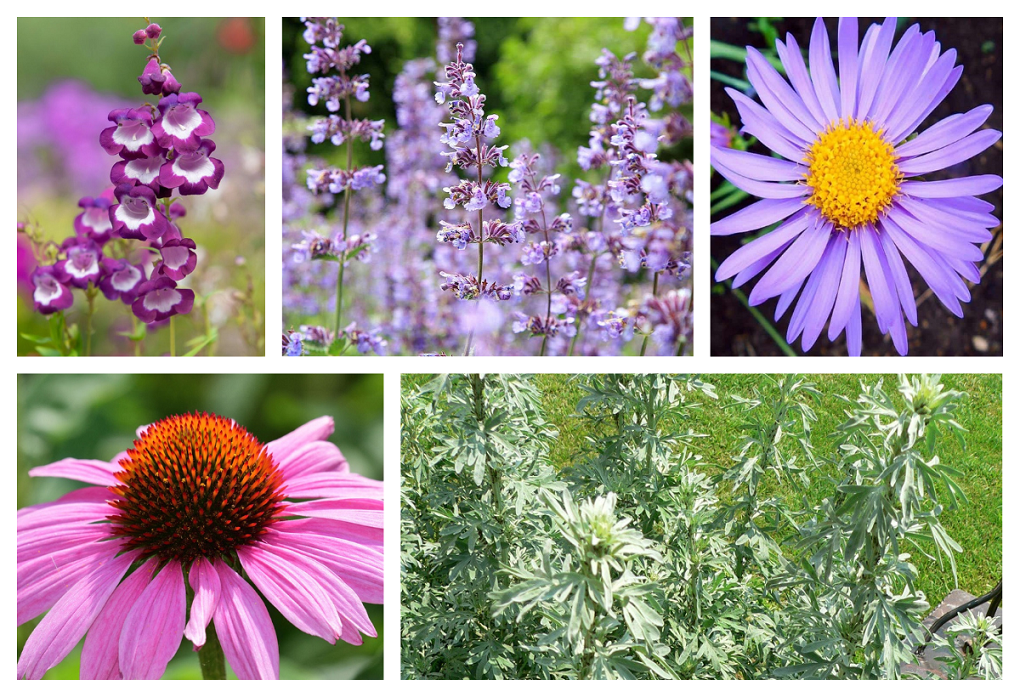
The following beautiful plants are examples of houseplants that are low on effort and maintenance. Some of them can even grow in poor soil, which means that they don’t need to be fed fertilizers. These plants prevent soil erosion by keeping the soil intact and even help with improving the groundwater level.
Aster- Symphyotrichtum spp. or Aster is a blooming plant that can grow at least 6 feet tall. Many species of Aster are native to North America and can be exposed to full sun or partial shade during peak summers. This plant generally blooms during late summer and produces flowers in hues of blue, white, pink, or purple. They thrive in well-draining soil but can tolerate a wide range of growing conditions, including drought-like conditions.
Agave- Agave or century plant is a perennial succulent plant belonging to the family Asparagaceae. This plant is native to North, Central, and South America. This plant thrives in well-draining soils, such as rocky, sandy, or cactus soil that is preferably slightly acidic. It only needs to be watered when the soil is completely dry and requires full direct sun for at least six hours daily. The agave plant is used to make syrup, which is a common alternative to sugar as it has a lower glycemic index. It has a neutral flavor with notes of caramel or molasses.
Purple coneflower- Echinacea purpurea or purple cornflower is a herbaceous perennial flowering plant that is native to eastern North America. Purple coneflowers need to be planted in a spot that receives 6 to 8 hours of direct sun but can also thrive in partial shade. It can be grown in a variety of soil types and for best results it is advised to add some compost to the planting medium before planting. While coneflowers are considered drought-tolerant plants, however, they do require frequent watering during the first year of life. The plant becomes more tolerant of low-water conditions as it matures.
Aloe- Aloe includes several hundred species of flowering succulents that grow in large rosettes and thrive in hot and dry climates. They are also great options for drought-tolerant landscaping plants as it requires watering only once a week unless it has rained. Allow the soil to completely dry out before watering it as frequent or overwatering can cause the aloe leaves to shrivel up and root rot. Also, ensure that the aloe plant is planted in a well-draining potting mix with proper drainage holes. The aloe plant is not only beautiful to look at but its leaves can be used to make your hair, skin, and body healthy.
Beardtongue- Penstemon Spp. or beardtongue is a blooming plant that thrives in hot and warm conditions with access to full direct sunlight. Native to North America, this plant produces clusters of nectar-rich tubular flowers in a wide range of colours that attract butterflies, bees, and hummingbirds.
Artemisia- Artemisia spp. or Artemisia is a genus of plants that includes hundreds of species of hardy herbs and shrubs, such as tarragon. This plant tends to thrive in rich and dry to medium moisture well-draining soil with access to full direct sunlight. Once established, this plant becomes tolerant to high heat and drought-like conditions.
Catmint- Catmint or Nepeta spp. is a blooming plant that produces flowers in shades of blue, white, or pink. It is a reliable plant that is tolerant of different soil conditions and is low on maintenance.










